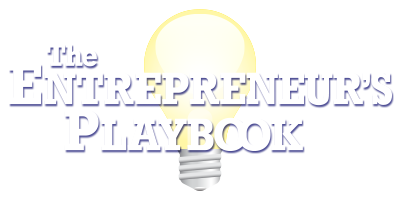We are standing on the brink of a monumental shift in human history. What makes this moment unique isn’t just a single industrial revolution — it’s two of them unfolding at the same time — simultaneously. The Fourth Industrial Revolution (4IR) is still in full force, but the Fifth Industrial Revolution (5IR) is already beginning to take shape. This convergence is creating something powerful, something extraordinary — a future where technology doesn’t just automate, but elevates humanity to new heights.
The Fourth Industrial Revolution: The Rise of Digital Titans
The 4IR has already flipped the script on how we live and work. It’s brought us technologies like artificial intelligence, automation, the Internet of Things (IoT), and more, all weaving the physical, digital, and biological worlds into one interconnected web. Whether it’s AI diagnosing diseases or IoT systems managing entire cities, we are witnessing a transformation that’s disrupting industries and changing the rules of the game.
But this revolution is far from over. We’re still discovering new possibilities every day — think quantum computing, predictive analytics, and smart devices that adapt to your needs before you even ask. And as this evolution unfolds, it’s not just laying the groundwork for the future, it’s supercharging the revolution that’s already here.
The Fifth Industrial Revolution: The Human Factor
Enter the Fifth Industrial Revolution. While the 4IR has been all about optimizing, automating, and driving efficiency, the 5IR takes it up a notch by focusing on people. It’s about creating a future where humans and machines work side by side, not just for productivity but to improve life in meaningful ways.
The 5IR asks a powerful question: How can we use technology to build a better, more human-centric world? This isn’t about robots taking over our jobs; it’s about technology amplifying what makes us uniquely human — our creativity, our empathy, and our ability to solve complex problems. It’s a future where AI doesn’t replace us, it empowers us.
The Power of Convergence: Where Tech Meets Humanity
What’s truly exciting about this moment is that these two revolutions are happening together — and their fusion is creating opportunities we could only dream about a few years ago. This isn’t just a tech evolution; it’s a human revolution powered by technology.
- Innovation at Warp Speed: The tools we’ve built in the 4IR — like AI, automation, and blockchain — are now being used to accelerate the breakthroughs of the 5IR. Quantum computing, once a futuristic fantasy, is becoming a reality. Biotechnology is giving us the power to reimagine healthcare. These innovations are moving faster than ever, setting the stage for a future beyond what we thought possible.
- A Shift in Values: As automation and AI become the backbone of industries, the 5IR forces us to ask the bigger questions: How do we ensure that technology is used for good? How do we design systems that are fair, inclusive, and aligned with human values? The 5IR isn’t just a technological leap; it’s a call to embed ethics, empathy, and sustainability into everything we create.
- Sustainability and Purpose: The combination of 4IR technologies with the human-centered focus of the 5IR is driving innovation in areas like renewable energy, circular economies, and sustainable production. Imagine a world where businesses aren’t just focused on profit but on purpose — where AI helps solve the climate crisis, and blockchain ensures ethical supply chains.
- Redefining Work: The workplace is also changing. While automation is taking care of repetitive tasks, the 5IR will emphasize creativity, emotional intelligence, and problem-solving — skills that are inherently human. The future workforce won’t be about replacing people with machines but about empowering people to do what they do best: innovate, create, and lead.
The Entrepreneurial Revolution: A New Frontier of Opportunity
As entrepreneurs, this moment is electric with possibility. The convergence of these two revolutions isn’t just about massive corporations making headlines; it’s about opportunities for anyone with vision and a willingness to embrace the future.
Picture this: AI tools that allow you to scale your business without increasing your headcount. Biotechnology that enables personalized healthcare startups to flourish. Renewable energy solutions that reduce operational costs while making a positive impact on the planet. This is the world we’re entering — a place where human ingenuity meets cutting-edge technology to solve the world’s biggest challenges.
For the entrepreneurial mind, the 4IR and 5IR offer not just disruption but boundless opportunity. The question is no longer “How can we keep up?” but “How can we lead?” How can you, as an innovator, harness this convergence to create something that not only changes the market but changes lives?
The Future is Here: Embrace the Dual Revolution
This convergence is happening right now, and the stakes couldn’t be higher. We are at a tipping point where the choices we make will determine whether these technologies empower or divide us. Will AI create more inequality or will it give us the tools to address it? Will automation erase jobs or free us to focus on higher-order problems like climate change and poverty? The answer lies in how we choose to use these revolutions.
The beauty of this moment is that we’re not just passive spectators — we’re active creators. Entrepreneurs, thinkers, and innovators have the chance to lead the charge in building a future where technology is used to enhance, not diminish, the human experience.
We’re at the dawn of a new era, not just of smarter machines, but of a smarter, more compassionate humanity. The Fourth and Fifth Industrial Revolutions are our opportunity to reimagine what progress looks like. The tools are here. The future is calling. It’s time to build a world where technology works with us, for us, to make life better for all.

